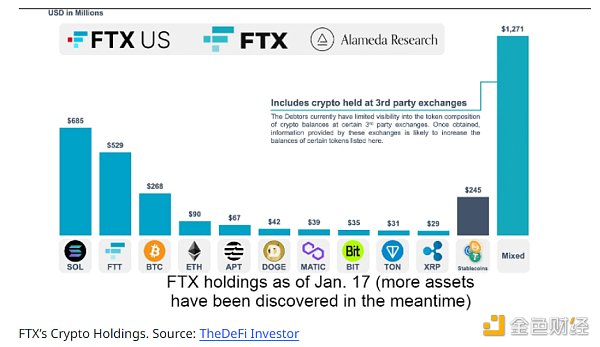Viewpoint: Are traditional valuation methods really effective? (under)
I have the strong feeling of we are in the crossroad of the time, and time will tell .– Peter Thiel, 1998
Active fork due to feature upgrades and community disagreement , hard fork forced to roll back due to code loopholes , or a single external organization forcibly launching 51% hashrate without approval The hard fork that emerged from the attack (although mainstream coins have not yet had such an incident) is of great significance to the ecology of community-driven projects. The former is a benign self-purification and a form of decentralized organization that gives all participants the right to choose . In fact, the incremental effect of the proactive hard fork on the project in recent times is far greater than its internal friction effect. In addition to the short-term currency price boost, we can also see that its internal ecology will show a more prosperous scene after the fork.For example, the emergence of BCH has driven the accelerated growth of mining and indirectly expanded Bitmain's AI + blockchain. Layout space.
Of course, what I am referring to is a project that gives the community more autonomy and runs through the POW mining mechanism.
A few days ago, a domestic project party ran out of money. On the one hand, it used a centralized method for fundraising, freely tampering with core terms without disclosing any information, and on the other hand said that "the decentralized organizational form has failed in practice" "Blockchain is nonsense." It's simply a misnomer. Centralization requires a centralized operation method and awareness. This awareness is not only in the self-discipline spirit of the project party, but also in the way that ordinary investors value their projects and more rational expectations.
- Ethereum 2.0 storage contract UI will debut on EthCC and is expected to go live in April
- Led by the central bank, the first blockchain standard in the domestic financial industry is released
- The Central Bank officially released the "Technical Security Specification for Financial Distributed Ledgers", which is applicable to institutions engaged in the construction or service operation of distributed ledger systems in the financial field (with full text)
This is another difference from the "fundamentals" in the traditional sense. Imagine a start-up company's team splitting because of different development concepts. This will be a fatal blow to the project.
So, in fact, I am looking forward to the hard fork of Ethereum.
It is hoped that this will be a confrontation between the V-led reformers and interest groups such as miners.
When Casper has passed testing and verification, it can adopt more aggressive strategies to improve its performance. It is a good thing to use tough methods to develop along the roadmap proposed at the beginning of Ethereum.
But some truths are universal. For example, development is the last word.
Here, my core point is-"For start-up companies, every penny should be used for project construction and development", and your operating income should be used for reinvestment (investment here refers to production Type investment, by no means financial investment), so as to expand the scale of the enterprise, and after it has grown to a certain scale, consider the issue of the capital market. Traditional financial practitioners tell the story of "Now net profit is 10 million, PE multiple is 15 times, and the expected profit after waiting for the secondary market is 20 million, PE multiple is 30 times, and the valuation can be quadrupled." IPO, digital currency exchange is not a traditional secondary market.
From this point of view, STO itself is only applicable to very limited types of projects. I can say bluntly that STO is not the future, at least not the future of the blockchain world.
"There are no ten-year-old babies in this world, and you can only live to be 80-year-old or longer if you grow up."
The example I gave above is to hope that you don't look at the price value of blockchain projects with an old eye, and don't blindly follow the concept of the current hype and the "business model" based on traditional valuation methods.
Of course, unfortunately, my ability is limited. For the time being, I cannot see the specific form of commercial landing of the future currency circle ecology, nor can I give a valuation model suitable for the currency circle.
Finally, three points are summarized:
(1) For the three different attributes of payment, utility, and security, the valuation methods are different, and in some projects, there may be overlapping effects. For example, Ethereum is not only defined by payment tokens, especially after the offline expansion solution is completed.
( 2) The digital currency secondary market is very different from the traditional secondary market. Different risk-taking stages and different pass-through capabilities will cause large differences in equity and currency financing of the same project, which is a reasonable phenomenon. As for whether the total value of the project is a simple addition of equity + currency rights or whether currency is used as a part of equity assets, there is no certain amount.
( 3) There is no reasonable valuation method for the currency circle, which does not mean that the currency circle projects will always be chaotic and cannot be reasonably priced. The point is that people pay too much attention to the chain now, but ignore the booming DAPP. Only when the upstream application obtains more specific traffic can there be a reasonable way to quantify. This method is by no means multiplying the profit by the PE value. Nor is it a general operation that can be made by applying Fisher's equations.
Let's see what happens in the future.
[ 1] In the original text, John Pfeffer abstracted the value of Bitcoin into a value storage function, and abstracted the value of commonly used payment tokens such as Ethereum and BCH as payment means functions. I don't fully agree with this.
[ 2] Reference: John Pfeffer, An (Institutional) Investor's Take on Cryptoassets, 2017.
[ 3] Reference: Vitalik Buterin, On Medium-of-Exchange Token Valuations, 2017.
[ 4] In the article "Bitcoin's Market Bubble: A Pricing Model Based on Behavioral Finance", the author first proposed a derivative pricing model with reference to Cox. Ross, and calculated it based on the expected discounted return under a risk neutral measure Method of Bitcoin instant price. The price of bitcoin was quantified using parameters such as the price of the mining machine and the cost of electricity.
[ 5] The public offering round is not mentioned here, but the valuation and unlocking logic should be consistent with the text.
[ 6] As of this writing, the BCH hard fork has not been completed.
[ 7] The strategy here also includes the change from Ethereum to the POS consensus mechanism. According to the author's prediction, it is only a matter of time until technical problems are resolved. However, at the last point of actual implementation, there must be a battle between the core team represented by V God and vested interest groups, and there is almost no possibility of a "soft landing".
We will continue to update Blocking; if you have any questions or suggestions, please contact us!
Was this article helpful?
93 out of 132 found this helpful
Related articles
- Behind the quiet change in attitude towards the issuance of the CBDC, the United States values these more!
- Analysis | The central bank is accelerating the development of legal digital currencies in 2020
- Is it a breakthrough high or one for 100,000 knives? Let's take a look at the halving of the currency price predicted by foreign big Vs
- May lose $ 3.1 billion in revenue in one year, Kraken's latest report thinks halving could hurt mining
- Central bank digital currency (CBDC) international activity warms up, the central bank of Ukraine takes the lead
- Article of the Central Bank Institute of Digital Research clarifies the "right and wrong" of the blockchain: remove fakes and save the truth, you cannot do image engineering for the blockchain
- Cryptocurrency weekly gains list (2.16-2.22): Dragon Coins rose 109.41%, Cosmos rose 8.67%






